![]()
Have you heard of using generative AI in Assessment? Assessment is a crucial aspect of the education system. It is essential to evaluate students’ learning progress and provide feedback to both the students and the teachers. However, traditional methods of assessment are often time-consuming, and grading subjective tasks can be challenging. This is where generative AI comes in.
Generative AI is a form of artificial intelligence that uses algorithms to create original content. It can help educators rethink assessment by providing an objective, efficient, and personalized way of evaluating student work. In this article, we will explore how generative AI can transform the assessment process and benefit students, teachers, and education as a whole.
Table of Contents
- How Generative AI Can Help Educators Rethink Assessment
- The Potential Impact of Generative AI on Education
- Use Cases of Generative AI in Assessment
- Examples of Generative AI in Assessment
- Frequently Asked Questions (FAQs)
- 1. Can generative AI completely replace human evaluators?
- 2. Can generative AI eliminate biases in grading?
- 3. Is generative AI expensive?
- 4. Does generative AI reduce the workload for educators?
- 5. Can generative AI provide real-time feedback to students?
- 6. Can generative AI improve accessibility for students with disabilities?
- Conclusion
How Generative AI Can Help Educators Rethink Assessment
Generative AI can provide a range of benefits to educators in terms of assessment. Here are some ways generative AI can help educators rethink assessment:
1. Automated Grading
One of the most significant benefits of generative AI is automated grading. It can save educators valuable time by grading objective tasks, such as multiple-choice questions, essays, and short-answer questions. Automated grading allows educators to focus on subjective tasks that require human evaluation, such as critical thinking and problem-solving skills.
2. Personalized Feedback
Generative AI can provide personalized feedback to students, which can help them understand their strengths and weaknesses. It can also provide suggestions for improvement, which can enhance their learning experience. Personalized feedback can be provided in real-time, which can help students stay engaged and motivated.
3. Objectivity
Generative AI can provide an objective assessment of student work. This can eliminate biases that may arise due to factors such as race, gender, and socioeconomic status. An objective assessment can also help educators provide fair evaluations and reduce the risk of grading errors.
4. Efficiency
Generative AI can improve the efficiency of the assessment process. It can grade tasks much faster than human evaluators, allowing educators to provide timely feedback to students. It can also help reduce the workload for educators, allowing them to focus on other essential aspects of teaching.
5. Accessibility
Generative AI can make assessment more accessible to students with disabilities. For example, it can convert text-based questions to audio or visual formats, which can help students with visual or auditory impairments. It can also provide alternative methods of assessment for students with physical disabilities.
The Potential Impact of Generative AI on Education
Generative AI has the potential to transform the assessment process and benefits education as a whole. Here are some potential impacts of generative AI on education:
1. Improved Learning Outcomes
Generative AI can help students receive more personalized feedback and suggestions for improvement. This can enhance their learning experience and improve their overall learning outcomes. It can also help educators identify areas where students may be struggling and provide targeted interventions to support their learning.
2. Reduced Bias
Generative AI can provide an objective assessment of student work, reducing the risk of bias in grading. This can help eliminate disparities that may arise due to factors such as race, gender, and socioeconomic status. An objective assessment can also help educators provide fair evaluations and reduce the risk of grading errors.
3. More Efficient Assessment
Generative AI can improve the efficiency of the assessment process. It can grade tasks much faster than human evaluators, allowing educators to provide timely feedback to students. It can also help reduce the workload for educators, allowing them to focus on other essential aspects of teaching.
4. Increased Accessibility
Generative AI can make assessment more accessible to students with disabilities. It can convert text-based questions to audio or visual formats, which can help students with visual or auditory impairments. It can also provide alternative methods of assessment for students with physical disabilities. This can help ensure that all students have equal access to education and evaluation.
5. Enhanced Teacher Training
Generative AI can help educators improve their teaching practices by providing them with insights into student learning patterns. It can identify areas where students are struggling and suggest interventions to support their learning. It can also help educators identify their teaching strengths and weaknesses, allowing them to tailor their teaching methods to meet the needs of their students.
6. Improved Curriculum Design
Generative AI can provide insights into the effectiveness of the curriculum and identify areas where improvements can be made. It can help educators develop more targeted and effective learning materials, which can improve student outcomes. It can also help educators identify areas where students may need additional support, such as critical thinking or problem-solving skills.
Use Cases of Generative AI in Assessment
Generative AI has already been used in various forms of assessment, from grading standardized tests to providing personalized feedback to students. Here are some use cases of generative AI in assessment:
1. Automated Essay Scoring
Automated essay scoring is a form of generative AI that uses algorithms to evaluate essays and provide a score. This technology has been used in standardized testing, such as the Graduate Record Examination (GRE) and the Test of English as a Foreign Language (TOEFL). It has been found to be just as accurate as human evaluators, and it can evaluate essays much faster, allowing for more efficient grading.
2. Personalized Feedback
Generative AI can provide personalized feedback to students based on their learning patterns and individual needs. For example, a system called ALEKS (Assessment and Learning in Knowledge Spaces) uses adaptive testing to identify areas where students are struggling and provide personalized instruction to help them improve. Another system called Knewton uses data analytics to personalize learning materials for each student, based on their learning style and progress.
3. Grading Objective Tasks
Generative AI can grade objective tasks, such as multiple-choice questions and short-answer questions, with high accuracy and efficiency. This can save educators time and reduce the risk of bias in grading. For example, the EdTech company Gradescope uses generative AI to grade assignments, allowing educators to focus on providing feedback on subjective tasks.
4. Adaptive Testing
Adaptive testing is a form of generative AI that adjusts the difficulty level of questions based on a student’s previous answers. This allows for more efficient and accurate testing, as it can identify a student’s level of knowledge and adjust the difficulty of questions accordingly. Adaptive testing has been used in various standardized tests, such as the SAT and the ACT.
5. Alternative Methods of Assessment
Generative AI can provide alternative methods of assessment for students with disabilities or those who have difficulty with traditional testing methods. For example, the National Science Foundation has funded a project to develop a system that uses generative AI to evaluate the speech of children with autism and provide a more accurate assessment of their language skills.
6. Plagiarism Detection
Generative AI can be used to detect plagiarism in student work, which can save educators time and improve the integrity of the assessment process. For example, Turnitin uses generative AI to compare student work against a vast database of sources and identify potential instances of plagiarism.
Examples of Generative AI in Assessment
Here is a more specific example of how AI can help educators in assessment:
Suppose you have assigned your students an essay reflecting on their personal experience, discovery, and specific learning visiting an industrial spot that is relevant to their study topic. This can be a time-consuming task for you as an educator to assess as you are expecting their submission to be descriptive and unique. However, now you can utilize generative AI to help you with this assessment in two ways.
First, you can utilize generative AI to plan a rubric for assessing this essay assignment. Below is the prompt that can help here:

The output that we got from AI is the following but it may be different each time the prompt is used. Depending on what you require, assess the output and guide the AI further till you get what you required:

Then you can use generative AI to automate the assessment by scanning the submissions following the rubrics. This would help you quickly get an overview of individual students’ submissions and guide them further with specific observations. Below is a demonstration on how this would work:

The red-marked portion is the actual prompt for AI and the later part is the essay that you want the AI to assess. The AI in return to this prompt generated the following assessment:

This worked really well for this scenario but it may not work all the time. While it can be of great help, you as the teacher, need to review this assessment to further fine-tune the assessment done by the generative AI.
You can even prepare feedback using generative AI with empathy and encouragement. This whole process will also make the assessment bias free making sure that all students get the same treatment. Below is an example prompt and output:

Of course, you as an educator are not expected to be totally absent in the process. You are also required to guide the AI for better output and to check if any important adjustment to the process is required or not. To do this efficiently, however, you also need to have a good idea of prompt engineering.
Depending on which subject or topic you are teaching, there are multiple ways to utilize AI in the process of assessment. You can also think of designing new assessment activities or processes to engage your students better. For example, if you are teaching mathematics and you want to prepare multiple assessments for your students using the Bloom’s Taxonomy to understand their learning level, this is easily possible with AI within a few minutes. Here is a prompt template for this if you want to try it out:
“I have taught my students <Topic/Concept Name> and I want to test their learning levels with Bloom’s taxonomy. create example assessments on basic calculus for each level of Bloom’s Taxonomy.”
The AI should provide you with multiple assessment examples for each level of Bloom’s Taxonomy on that topic or concept. This should even work for Mathematics or any other technical subjects.
Frequently Asked Questions (FAQs)
1. Can generative AI completely replace human evaluators?
No, generative AI cannot completely replace human evaluators. It can only grade objective tasks, such as multiple-choice questions and short-answer questions. It cannot evaluate subjective tasks, such as critical thinking and problem-solving skills, which require human evaluation.
2. Can generative AI eliminate biases in grading?
Generative AI can provide an objective assessment of student work, which can help reduce the risk of bias in grading. However, biases can still arise due to factors such as the design of the assessment task or the algorithm used to grade it. Educators must be aware of these biases and take steps to mitigate them.
3. Is generative AI expensive?
The cost of generative AI depends on various factors, such as the type of assessment task, the number of students, and the complexity of the algorithm. However, the cost of generative AI is often lower than the cost of human evaluators in the long run.
4. Does generative AI reduce the workload for educators?
Generative AI can reduce the workload for educators by grading objective tasks faster than human evaluators. This allows educators to focus on subjective tasks that require human evaluation, such as critical thinking and problem-solving skills.
5. Can generative AI provide real-time feedback to students?
Yes, generative AI can provide real-time feedback to students, which can help them stay engaged and motivated. Real-time feedback can also help students identify areas where they need additional support and take corrective action.
6. Can generative AI improve accessibility for students with disabilities?
Generative AI can improve accessibility for students with disabilities by providing alternative methods of assessment, such as audio or visual formats. This can help ensure that all students have equal access to education and evaluation.
Conclusion
Generative AI has the potential to transform the assessment process and benefits education as a whole. It can provide an objective, efficient, and personalized way of evaluating student work, which can improve learning outcomes and reduce bias in grading. It can also improve accessibility for students with disabilities and reduce the workload for educators. However, it is important to note that generative AI cannot completely replace human evaluators and that educators must be aware of the biases that may arise due to the design of the assessment task or the algorithm used to grade it.
By incorporating generative AI into the assessment process, educators can rethink assessment and provide more targeted and effective feedback to students. This can enhance the learning experience and improve learning outcomes for students. Artificial Intelligence (AI) also has other useful aspects in education. If you wish to learn more about it, we recommend that you also check the following blog posts from us:
- Teaching in the Age of ChatGPT
- Impacts of ChatGPT 4 in Education
- How AI is Transforming the Landscape of Education
- How to Use AI in Education
- Using ChatGPT in Education Guide for Teachers
Khondker Mohammad Shah-Al-Mamun is an experienced writer, technology integration and automation specialist, and Microsoft Innovative Educator who leads the Blended Learning Center at Daffodil International University in Bangladesh. He was also a Google Certified Educator and a leader of Google Educators Group (GEG) Dhaka South.
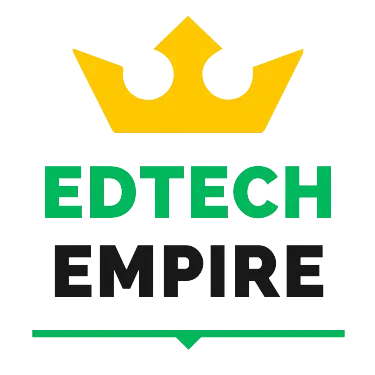
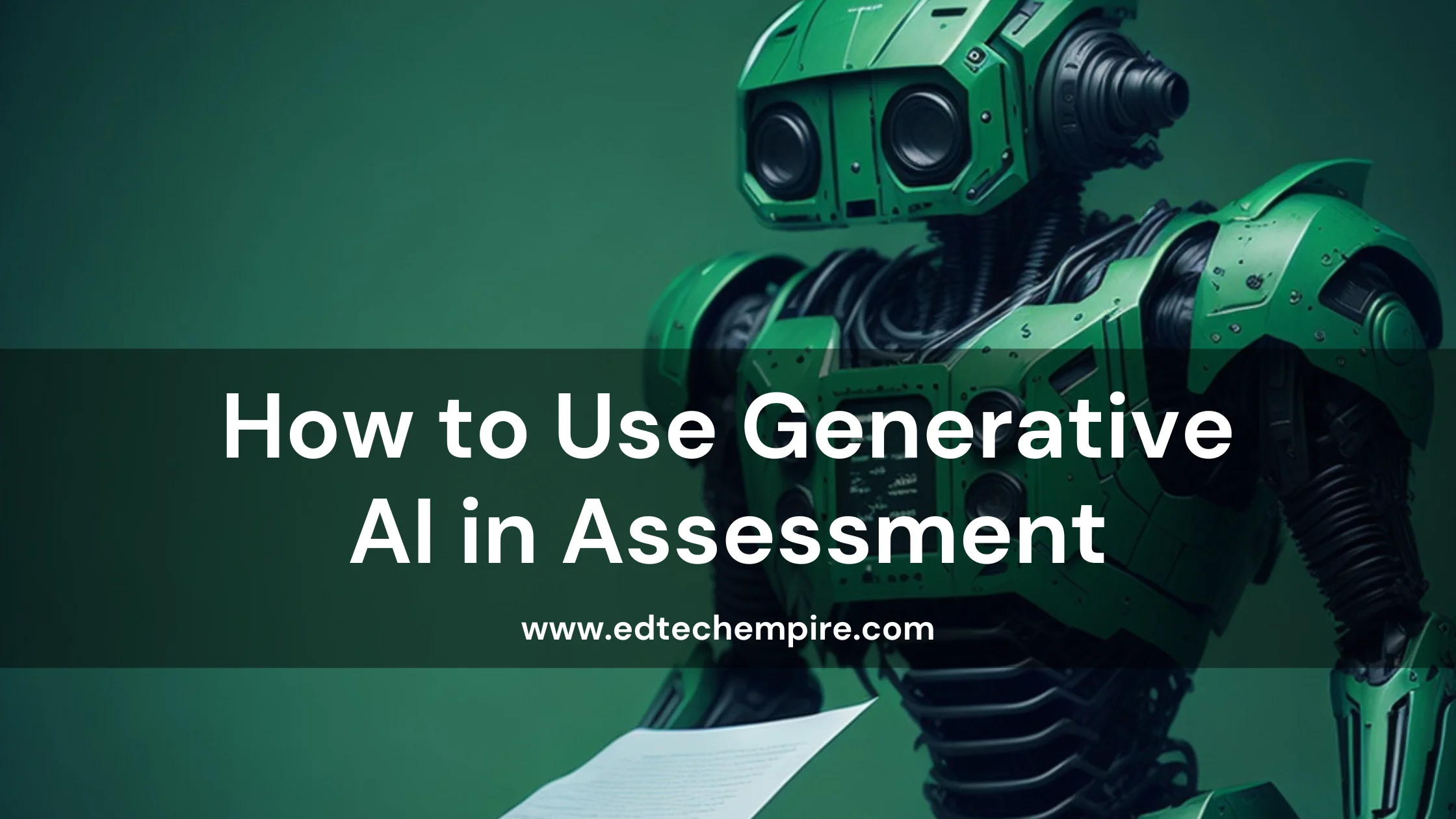




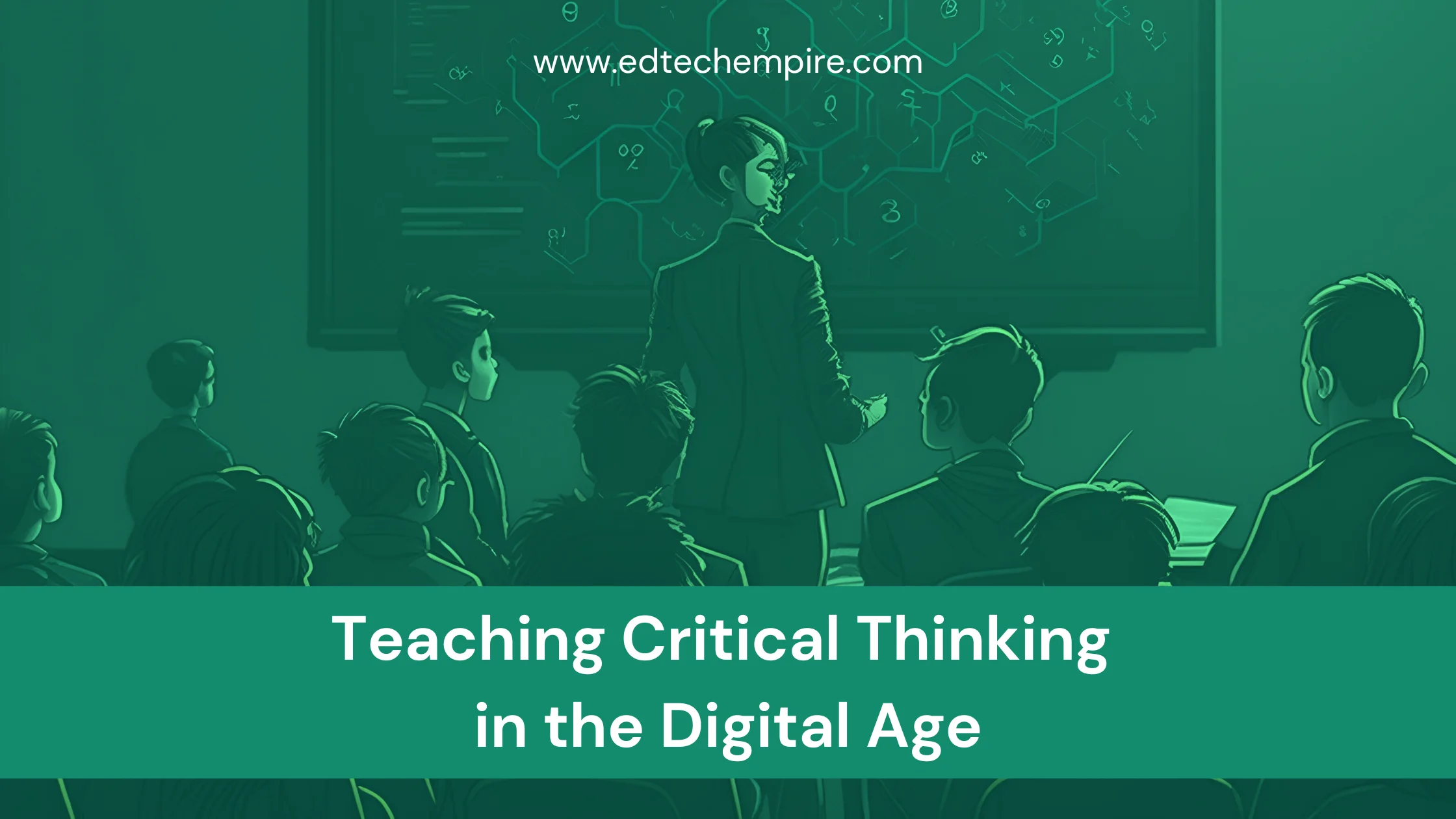


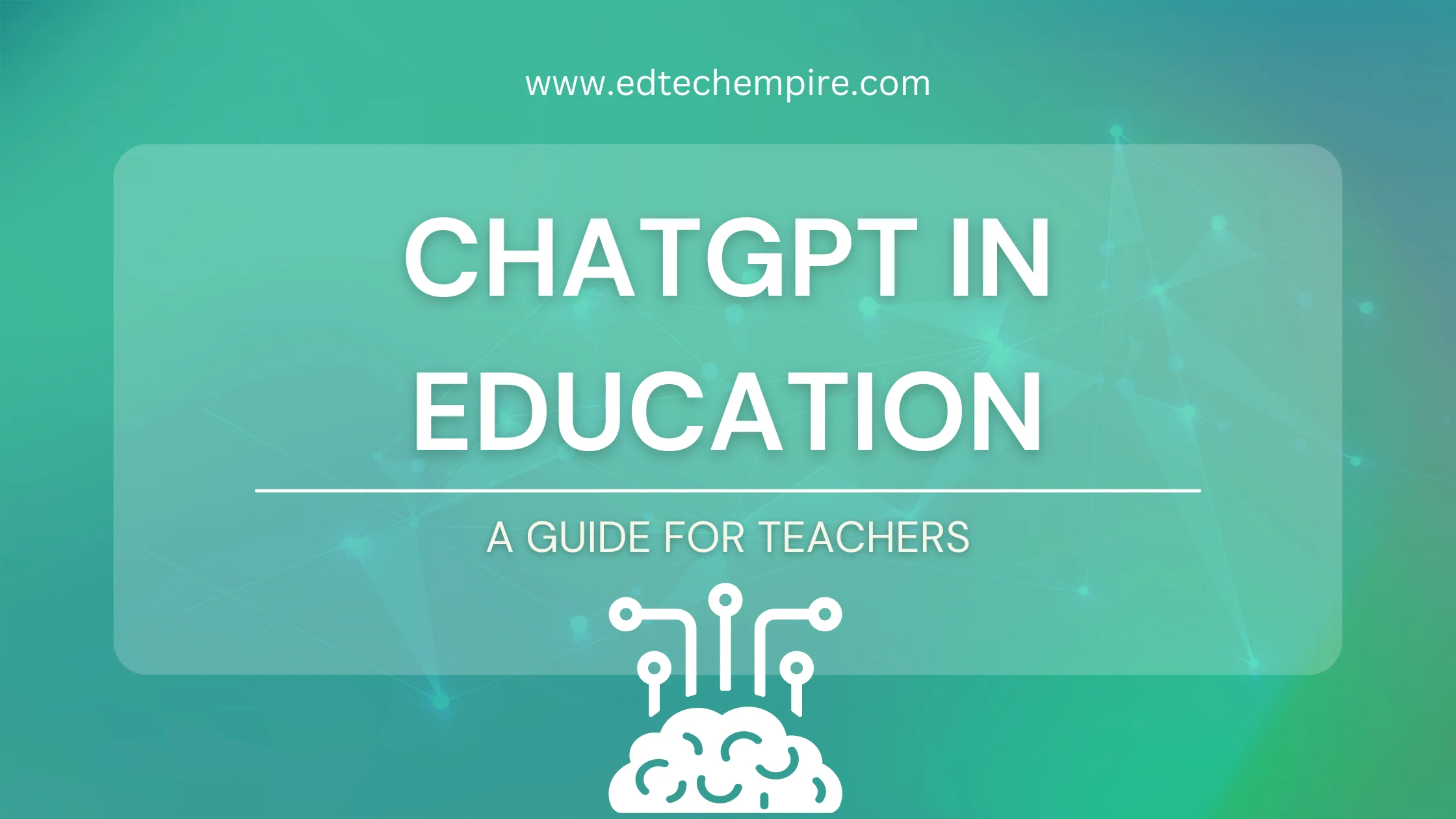



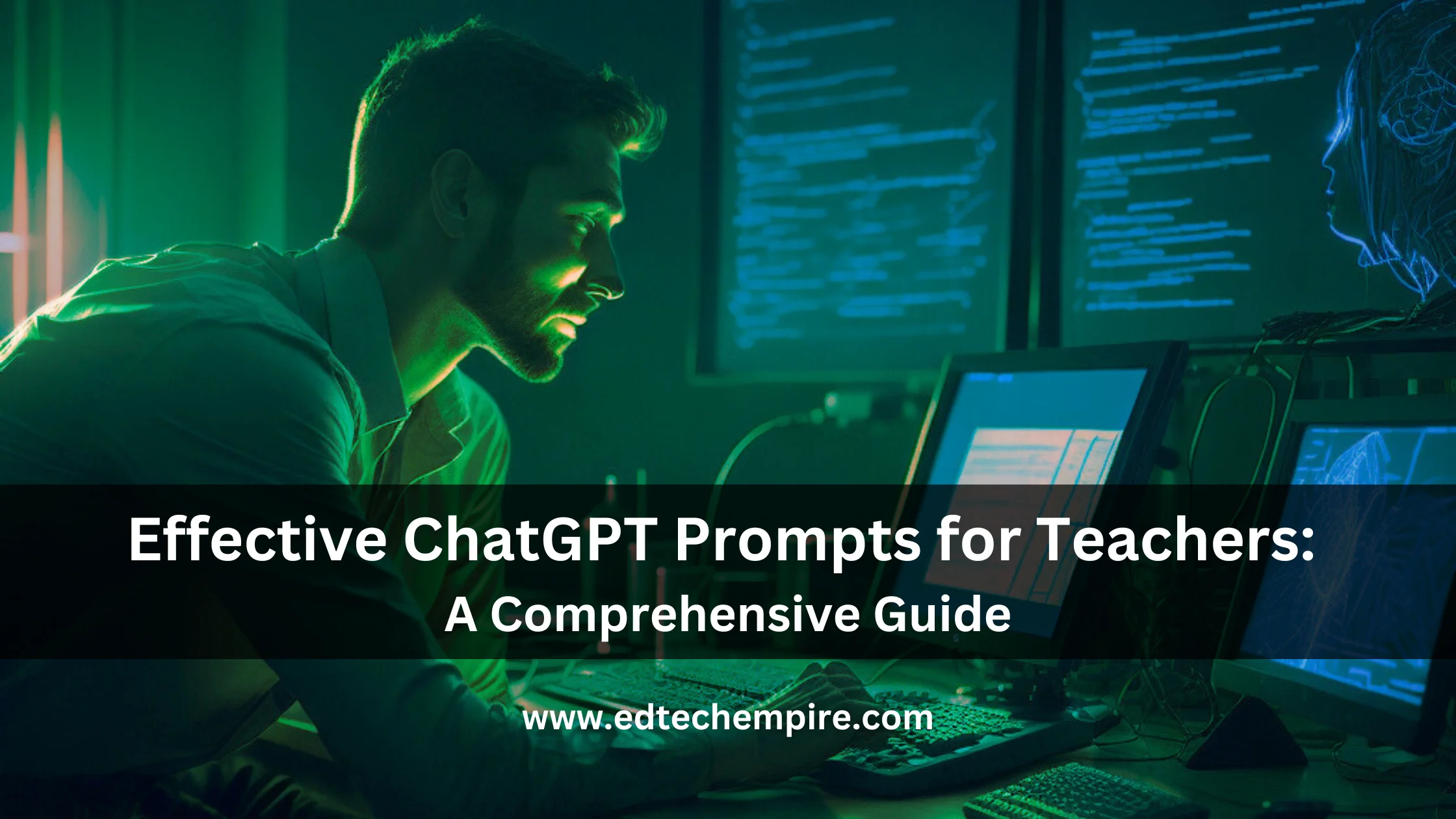
Leave a Reply